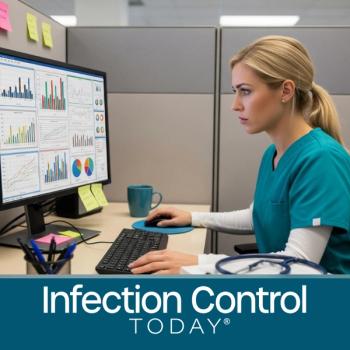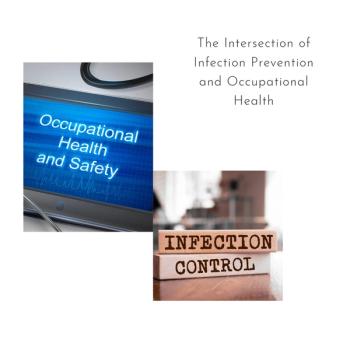
Economists Examine the Effect of COVID-19 Lockdown Measures on Mortality
A recent literature review and meta-analysis sought to determine the effects of COVID-19 lockdown measures on mortality rates. Here's what a team of economists found.
This article was originally published on
A team of economists from Johns Hopkins have examined the effects of government-mandated lockdowns in preventing mortality risk from COVID-19 in a new systematic review and meta-analysis.
The
Additionally, the study contends that such measures—stratified into categories including shelter-in-place-orders (SIPOs) and non-pharmaceutical interventions (NPIs)— adversely affected economic and social standing in the regions they were mandated. “In consequence, lockdown policies are ill-founded and should be rejected as a pandemic policy instrument,” the authors wrote.
The new analysis was led by authors Jonas Herby, a special advisor at the Center for Political Studies in Copenhagen; Lars Jonung, a professor emeritus in economics at Lung University in Sweden; and Steven H. Hanke, a Professor of Applied Economics and Founder, Co-Director of the aforementioned Johns Hopkins institute.
Hanke is additionally a Senior Fellow and Director of the Troubled Currencies Project at the Cato Institute, a currency and commodity trader.
The authors cited a trio of concepts, including 2 previous studies, spurring their interest in assessing understood associations between lockdowns and COVID-19-based mortality: a 2020 trial submitted to the National Bureau of Economic Research suggesting a decrease in COVID-19 daily death rates within 20-30 days “after each region experience 25 cumulative deaths;” another study suggesting that government policies—including those set in lockdown mandates—are “strongly driven” by those initiated among other countries; and the authors’ argument that there was “no clear negative correlation” between the degree of pandemic-driven lockdowns and COVID-19 deaths in the spring of 2020.
“Today, it remains an open question as to whether lockdowns have had a large, significant effect on COVID-19 mortality,” the authors wrote. “We address this question by evaluating the current academic literature on the relationship between lockdowns and COVID-19 mortality rates.”
NPI was used to describe any government mandate which directly restricted citizens’ “possibilities,” excluding any governmental recommendations, information campaigns, access to mass testing, voluntary social distance, etc. They wrote the NPI definition did indeed include interventions including schools or businesses, mandated face masking, and on. “Lockdowns” were defined as ≥1 NPI as described by the authors
Eligible studies were published by July 1, 2020 and observed the effect of lockdowns on COVID-19 mortality rates. The authors focused on studies examining “actual impact of lockdowns on COVID-19 mortality rates based on registered cross-sectional mortality data and a counterfactual difference in-difference approach.” Of 1048 observed trials, 34 met their eligibility criteria.
Based on the Oxford COVID-19 Government Response Tracker (OxCGRT)—a database from the University of Oxford Blavatnik School of Government collecting global policy responses to the pandemic stratified by 23 indicators including school closures, travel restrictions, and vaccination policy—just Oxford COVID-19 Government Response Tracker (OxCGRT)
1 of 186 observable countries did not impose ≥1 NPI prior to the end of March 2020, during the global wave of COVID-19 cases.
Using a stringency index informed by the OxCGRT data, the authors reported that the average NPI in Europe and the US reduced COVID-19 mortality by 0.2% versus COVID-19 policies based on government recommendations.
“(SIPOs) were also ineffective,” the authors wrote. “They only reduced COVID-19 mortality by 2.9%.”
The team further reported a 10.6% reduced rate of COVID-19 mortality in regions that closed non-essential businesses, as well as potentially supporting—but limited—evidence of masking mandates for the reduction of mortality.
“The effect of border closures, school closures and limiting gatherings on COVID-19 mortality yields precision-weighted estimates of -0.1%, -4.4%, and 1.6%, respectively,” authors wrote. “Lockdowns (compared to no lockdowns) also do not reduce COVID-19 mortality.”
The team concluded from their research that lockdowns are not effective in reducing mortality rates during a pandemic, citing among their observed rationales that “even if lockdowns are successful in initially reducing the spread of COVID-19, the behavioral response may counteract the effect completely, as people respond to the lower risk by changing behavior.”
“If closing bars and restaurants causes the prevalence of the disease to fall toward zero, the demand for costly disease prevention efforts like social distancing and increased focus on hygiene also falls towards zero, and the disease will return,” they wrote.
Newsletter
Stay prepared and protected with Infection Control Today's newsletter, delivering essential updates, best practices, and expert insights for infection preventionists.






